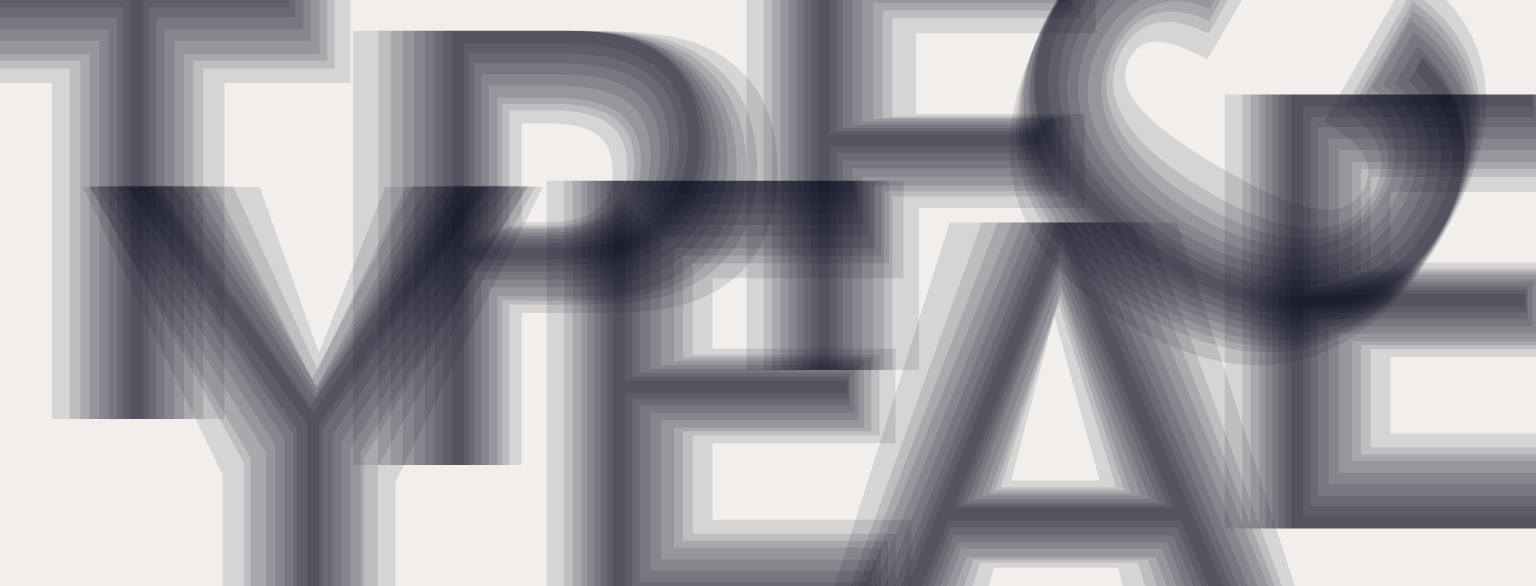The Unpredictable Typeface
Location – Home – Clients – Case Studies – The Unpredictable TypefaceTypography is in many ways a mystical practice. Most typeface designers choose their profession out of love for the subject, knowing that their work is little appreciated by the wider public. In many ways, type design is the most conservative of arts – one cannot change the shape of a letterform too much without destroying its essential purpose: to act as an abstract functional symbol in the process of written communication.
If a typeface is designed well, nobody notices. However, everyone notices the quirks in a poorly-designed type. And there are different typefaces for different situations. Something that looks elegant as a large title may be unreadable when set as standard body text.
This case study is of the type of meticulous service that I provide for my customers. It involved catching a problem that others had overlooked, diagnosing the issue and its potential consequences, and creating a practical solution that also anticipated future developments in publishing formats. And it was delivered gratis as a complimentary service to the client in question.
The Problem
When the publisher of a periodical with a monthly circulation of over one million copies wanted an overhaul of his magazine’s graphic design, he hired a new art director. The art director brought his aesthetic tastes, sense of design, and taste in typefaces along with him to his new job, and quickly put his signature on the magazine.
Upon publication, the new magazine design was widely acclaimed, and competitors quickly copied its appearance. The magazine’s aesthetic preceded an upswing in the popularity of geometric and slab-serif typefaces, a trend which is still popular in design circles today. But the new design had a critical problem that went unaddressed for more than a year.
The problem was brought to my attention by one of the magazine staff when we were discussing an unrelated issue. He mentioned that some older readers were having difficulty reading the magazine’s articles. The magazine used a variety of different printing presses to produce a single issue. In most cases, the results from all of the presses were acceptable. But on occasion, a press would print copies in which the body text became almost illegible.
The challenge for any designer is to ensure that the work they produce will survive practical conditions in the real world. For those who work in print, knowing the temperamental nature of the printing press is critical. The choice of paper, ink, plate production and press speed can produce radically different results from the same design.
It turned out that the typeface that the art director had chosen for the magazine’s body text was the problem. He had reliably used it for years, and it printed well on the slower presses that he had used for most of his professional life. But the typeface was relatively light in weight, and fared poorly in the rougher conditions of the magazine’s high-speed printing presses.
Part of the problem lay in the art director’s reference points. Day after day, he worked on an expensive high-quality monitor specifically built for graphic designers. Consequently the design looked acceptable on-screen and in final proofs printed on a photo-quality printer. Even the lower-quality proofs provided by the printing house were acceptable. However, the printing presses used to produce the final magazine resulted in variable-quality output.
The result was an impasse between the art director, the other magazine staff, the publisher’s production staff, and the companies responsible for printing the magazine. Each had given a bit of ground, but the art director had reached the end of his tether. The consequence was that magazine subscribers would continue suffer illegible text until a practical solution could be reached.
The Solution
My most important priority as a professional is to serve my clients, so that they can serve theirs in turn. I had been asked to help the magazine make a transition from a QuarkXPress workflow to one using Adobe InDesign and InCopy. This meant evaluating what needed to be done, building a new workflow and publication templates, training the staff, and being onsite and on-call to guide them through the transition.
Overhauling an entire production workflow can be challenging, and it is not unusual to run into stumbling blocks along the way. The test of any new workflow is how quickly such issues can be addressed, and in being able to anticipate potential problems before they manifest themselves. The illegible typeface was an example of one of these problems – particularly in the way that it was affecting the relationships between different magazine staff, and the impact that unreadable text was having on readers.
Fixing the typeface offered a simple solution to a problem with complex consequences. The issue was beyond the contract with my client, but not beyond my scope. But spending a little time resolving the problem would make the remainder of the project easier, and so I took the initiative to get it done quickly.
The first and most obvious solution was to see if the art director was willing to use the next-heaviest weight of the typeface. He rejected this option, saying that the weight was too heavy for his liking. After that, I showed him similar typefaces produced by other contemporary typefoundries. None of the four alternative typefaces were considered acceptable.
This left us with one final option: to build a new weight of the typeface currently in use. The art director was used to seeing the typeface appear in a certain way on slower printing presses. The results on the faster presses that the magazine used resulted in a lighter impression. Consequently, the obvious solution was to build a slightly heavier weight of the type so that it output on the faster presses mimicked the results of the existing weight on the slower presses.
I went to work immediately, and produced a rough first build of the new weight within a few hours. We tested it, and it gave us the results that we were after. However, typeface design isn’t as simple as that – a considerable amount of effort is spent on details that most people overlook. One example is something known as ‘hinting’.
A professionally-designed typeface should always include hinting instructions that determine how the letterforms should render at low resolution. Hinting is especially important when text is rendered on-screen, such as on websites or tablets. At the time, the magazine wasn’t publishing to these digital formats. I built the hinting instructions into the new weight of the typeface anyway. Today one can subscribe to a tablet version of the magazine, and it relies on the same properly-hinted typeface that I built years ago to solve a printing problem.
Once the typographic issue had been resolved, I was able to return to the remainder of the project. Part of it involved rebuilding the magazine’s layout templates. I quickly finished of this task, and also took the opportunity to retrofit the magazine template files for XML markup compatibility. Doing so would allow the magazine to reuse the content in their print edition in other formats, such as online. The magazine only started using XML markup five years later, but the templates that I had built were ready for them at that time.
Like rebuilding the magazine typeface, the XML retrofitting was completed at no cost to my client. Although these two issues were not part of the original scope of the project, they helped resolve an existing problem and prepared the magazine for future technologies and publishing formats. Both the publisher and art director were satisfied, and subscribers were able to return to their reading. It’s the type of service that my clients have come to depend upon.

